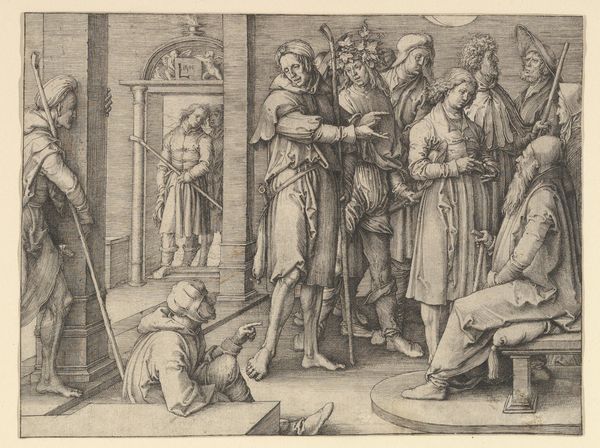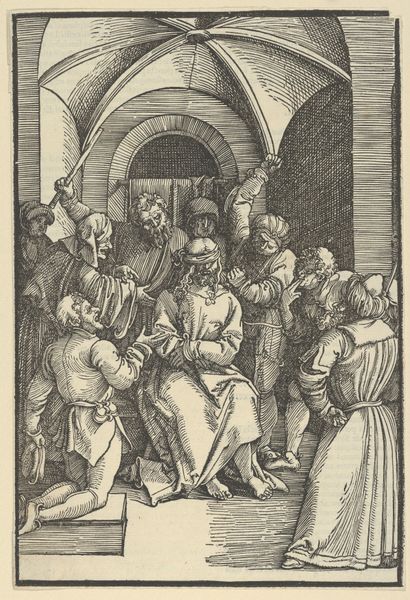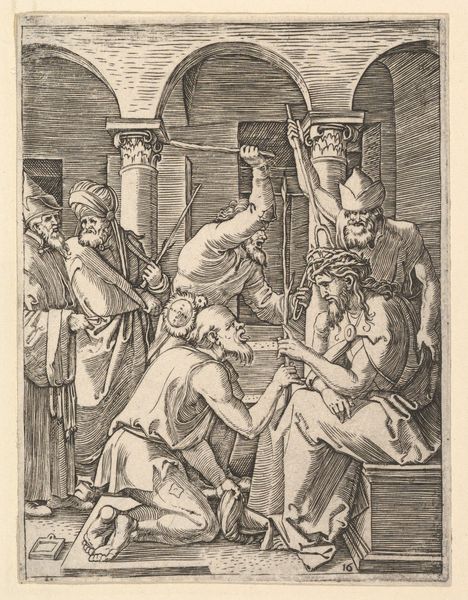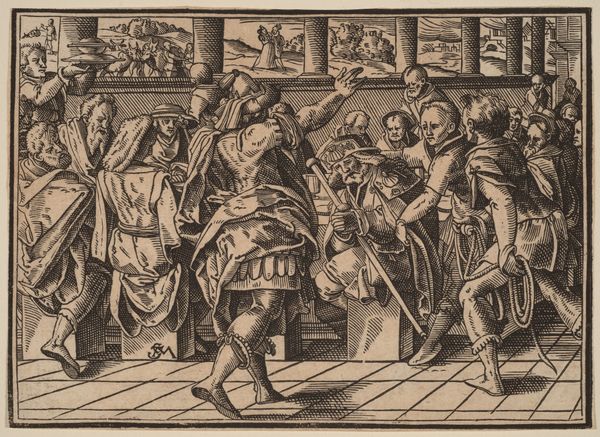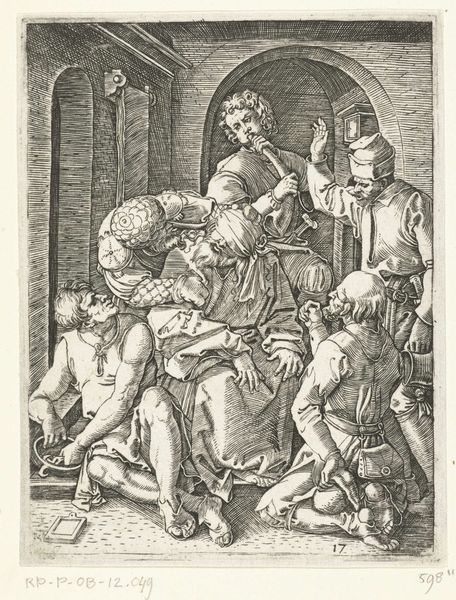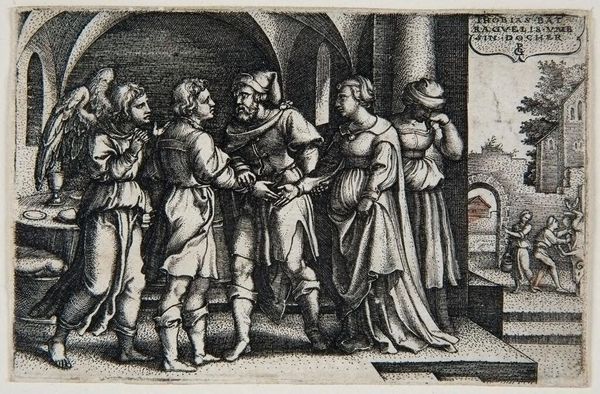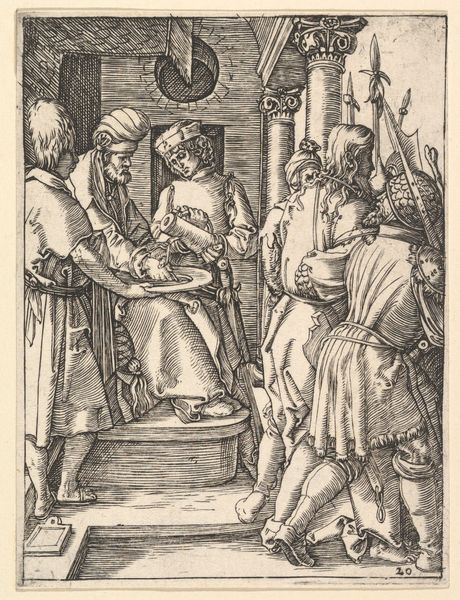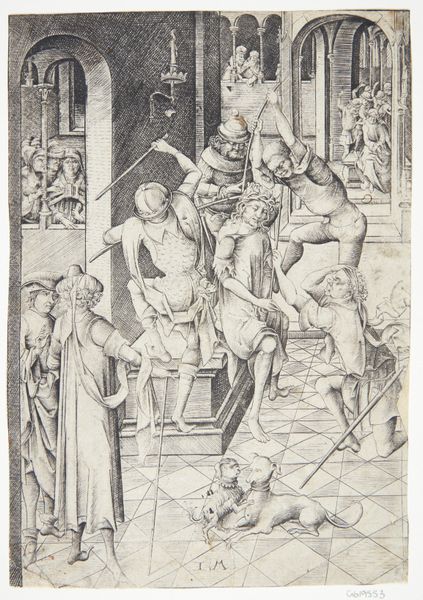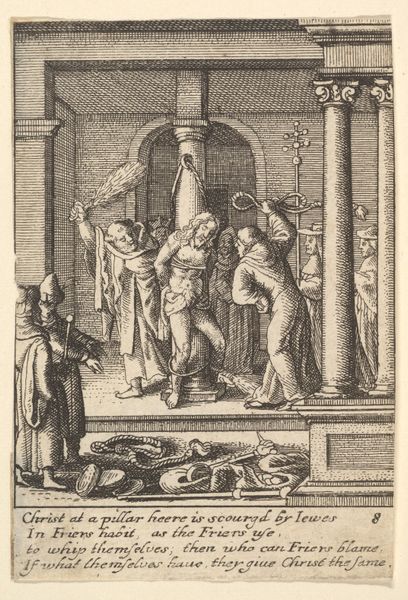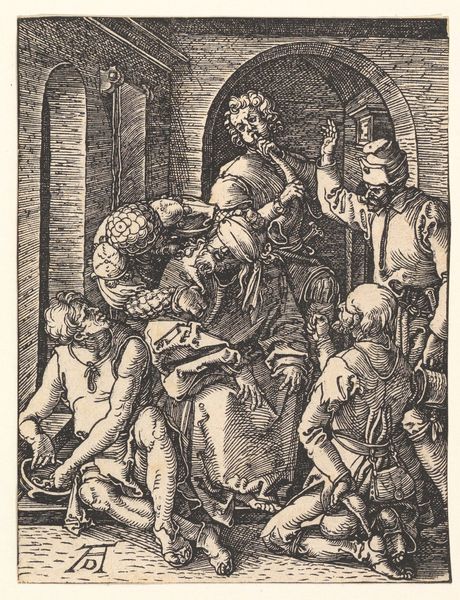
print, engraving
#
narrative-art
# print
#
figuration
#
11_renaissance
#
history-painting
#
northern-renaissance
#
engraving
Dimensions: height 61 mm, width 83 mm
Copyright: Rijks Museum: Open Domain
Georg Pencz created this engraving, “Christus en de overspelige vrouw”, sometime in the 16th century. Here, we witness a powerful biblical scene, dominated by gestures of accusation and silent introspection. Note Christ, bending down, writing in the dust. This gesture isn't explicitly described in the Gospel, which has led to much speculation about its meaning. Writing or drawing on the ground is an ancient gesture. In classical antiquity, it could signify taking possession of land or marking a boundary. Pencz, however, infuses it with a new ethical weight. Is Christ creating a space for reflection, offering a chance for the accusers to examine their own sins? Consider the accusatory gestures directed towards the woman. Pointing fingers are a primal form of blame, seen across cultures. Yet, Christ's downward gaze and inscription provide a counterpoint, a moment of pause that undermines the rush to judgment. Perhaps Pencz is showing us that moral authority lies not in accusation but in self-awareness. The motif resurfaces time and again, evolving with each telling, reminding us of the complex interplay between sin, judgment, and redemption.
Comments
No comments
Be the first to comment and join the conversation on the ultimate creative platform.


